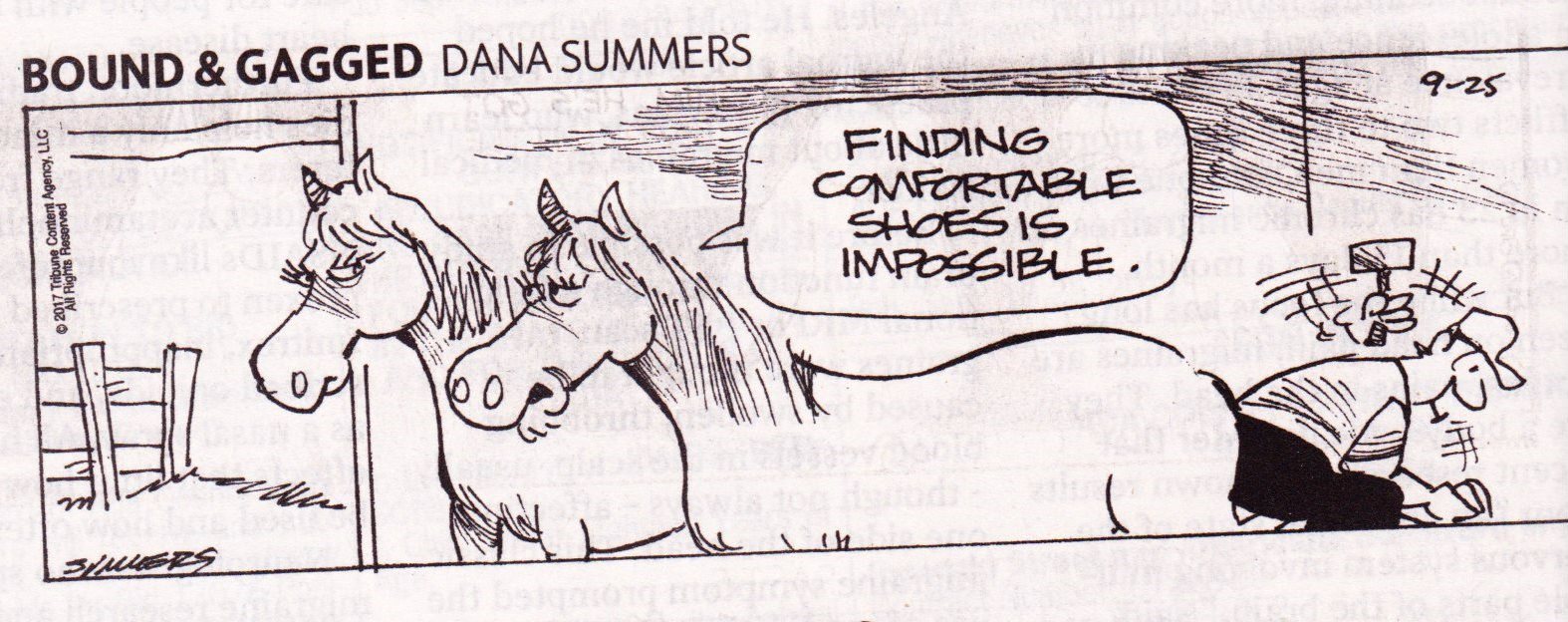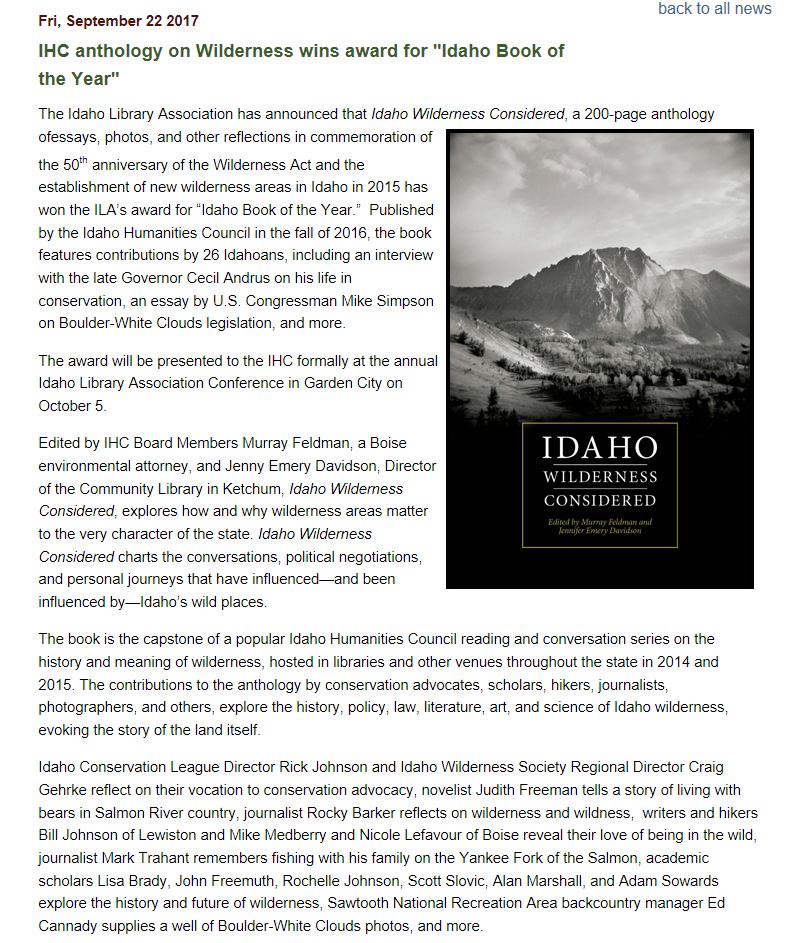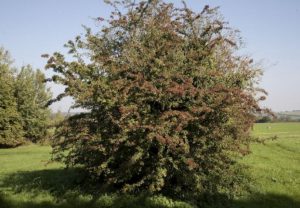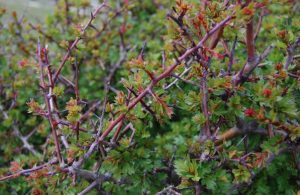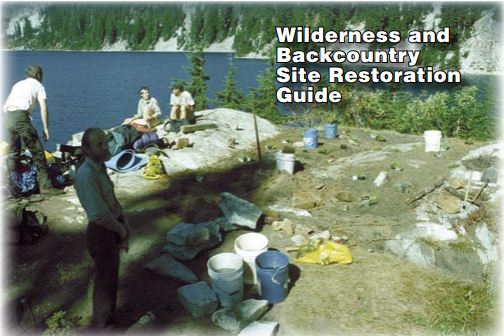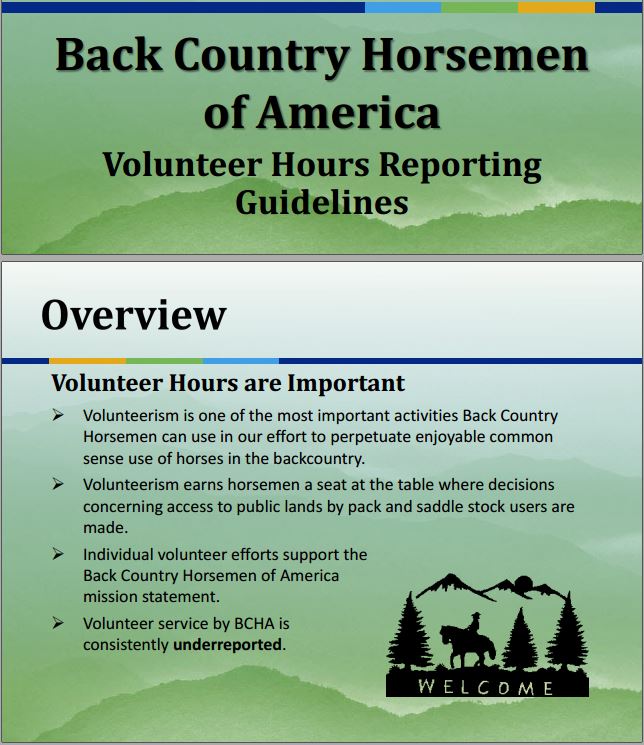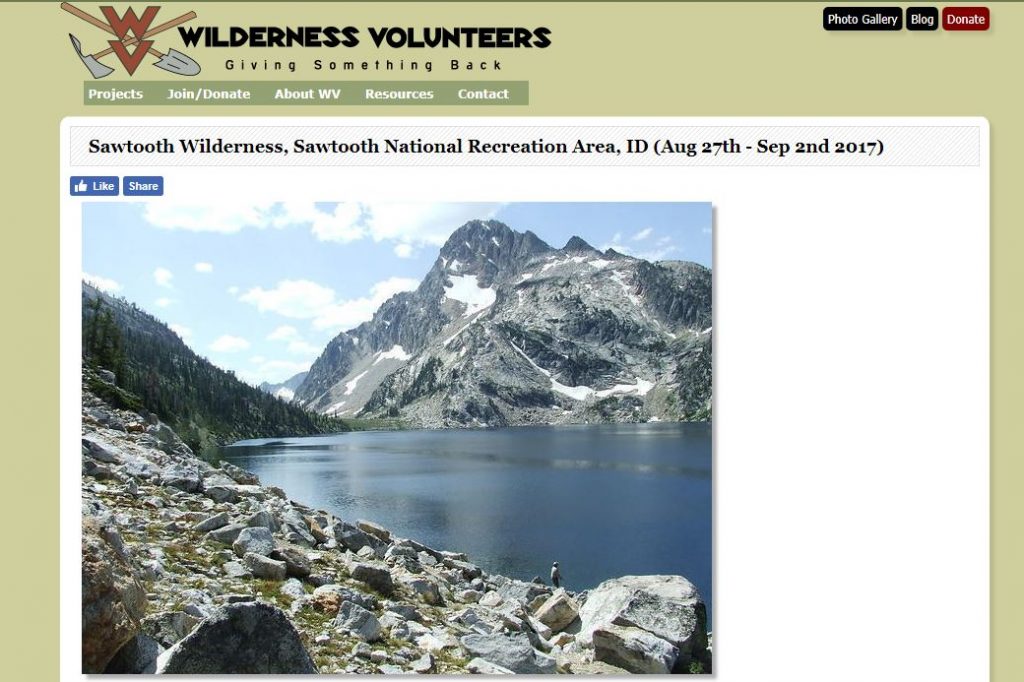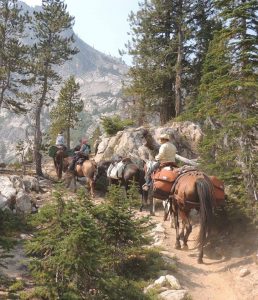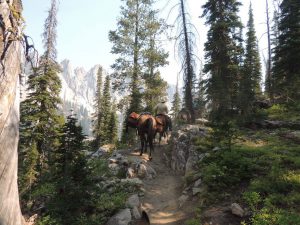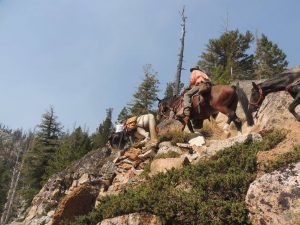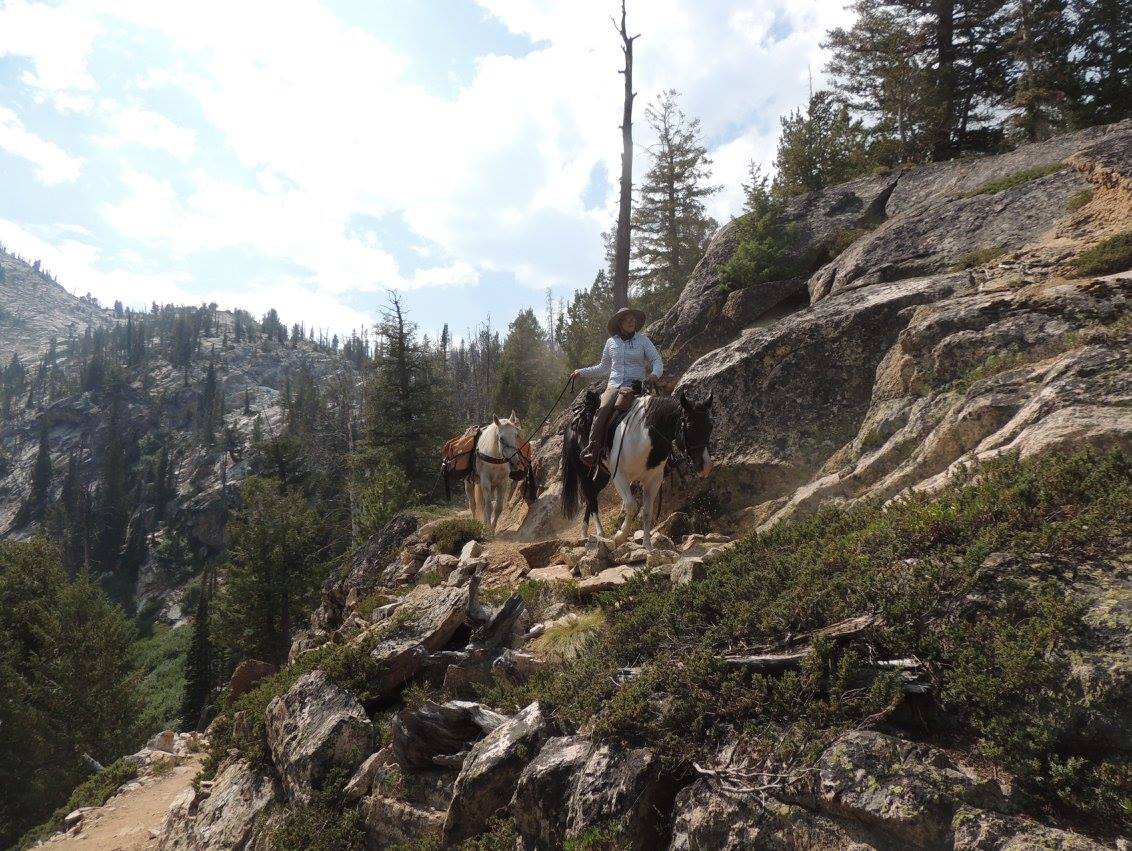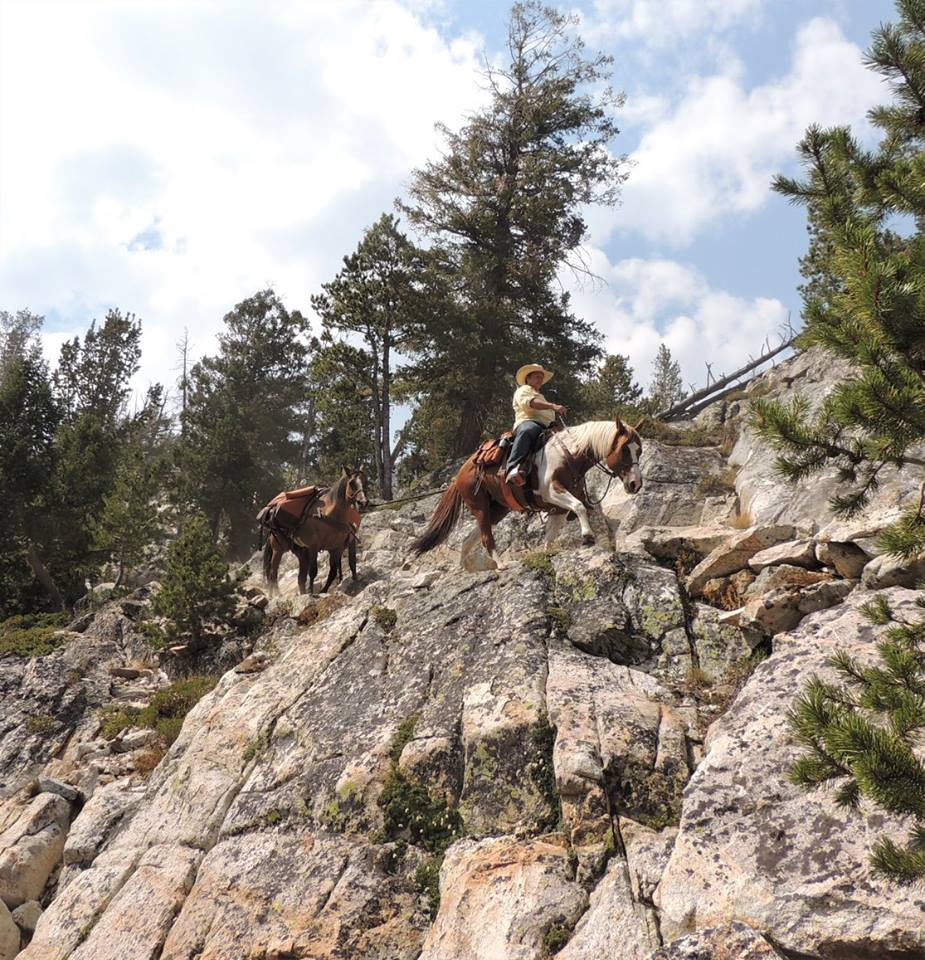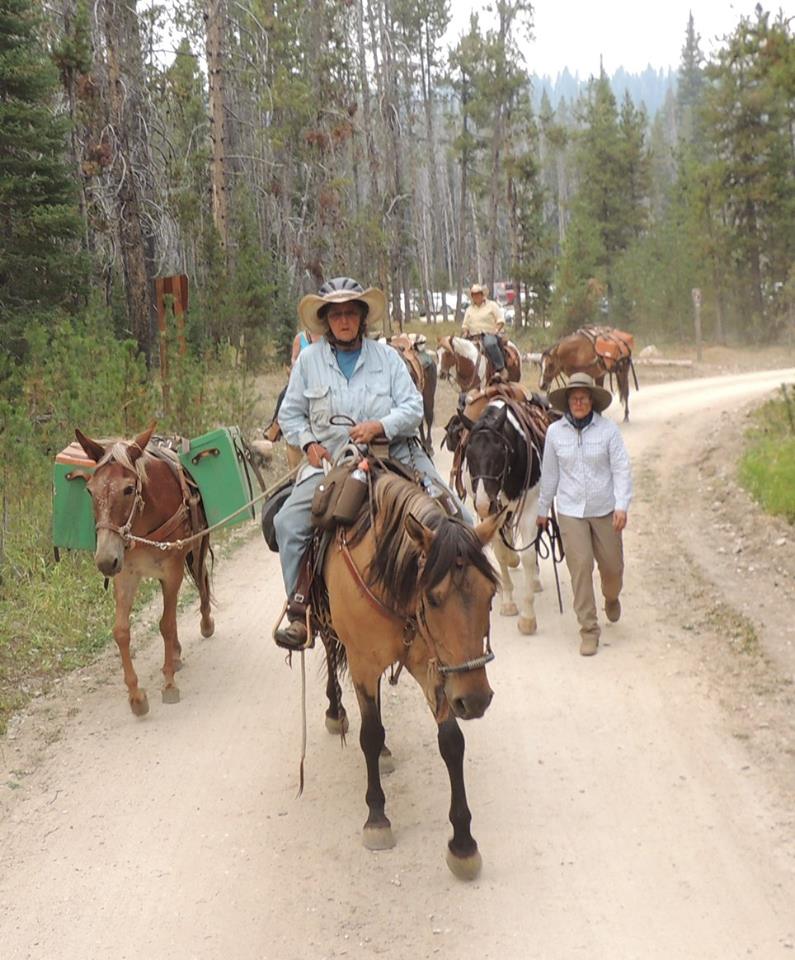
Heavy-Duty Pickup Truck Fuel Economy (Consumer Report – Sept 2017)
Every new passenger car and light-duty truck sold in the U.S. is required by federal law to have a fuel-economy estimate on the window sticker. Heavy-duty pickup trucks, however, continue to be sold without this valuable information being made available.
While light-duty pickups such as the Chevrolet Silverado 1500, Ford F-150, and Ram 1500 dominate sales year after year, contractors and serious trailer-towers often rely on more robust rigs, so hundreds of thousands of heavy-duty trucks are sold each year.
Many truck buyers are tempted to buy heavy-duty trucks because of their powerful diesel engines. But while diesel can be more fuel-efficient than gas engines, the weight of heavy-duty trucks actually reduces their mpg.
Even though the Environmental Protection Agency collects data from automakers on heavy-duty pickup truck emissions and fuel economy, it has never mandated that the results be made available to the public, largely for budgetary reasons.
To determine how the the heavy-duty trucks stack up, CR recently tested the Big Three of heavy-duty diesel trucks: the Chevrolet Silverado 2500HD, Ford F-250, and Ram 2500. All were equipped with four-door crew-cab bodies, turbodiesel engines, and four-wheel drive.
Nissan has tried to bridge the gap between the light-duty and heavy-duty trucks with its Titan XD (eXtra Duty)—with mixed success. CR tested the diesel-powered XD along with the three-quarter-ton diesel domestics. (Learn how CR tests fuel economy.)
What we found in our tests was that the efficiency of the diesel engines wasn’t enough to offset the added bulk of these monstrous trucks. The heavy-duty diesels achieved only 14-15 mpg, which was 1-2 mpg less than their gasoline-powered light-duty counterparts.
The extra power and brawn of the heavy-duty trucks do give them more hauling capability. But for those just looking for improved fuel efficiency from a diesel engine, it’s not worth upgrading to a heavy-duty truck. There is one exception: The Ram 1500 EcoDiesel is a light-duty diesel that returned an impressive 20 mpg overall in CR’s tests.
Of course, fuel economy will vary significantly depending how you equip your truck, how much weight you haul, and whether or not you’re towing a trailer on a regular basis. Our tests were conducted without a load or trailer, so consider these best-case scenarios. Heavy-duty trucks are less affected by hefty loads, so it is possible that a heavily laden heavy-duty truck might achieve the same or better fuel economy than light-duty pickup bearing that same load.
Consumer Reports is providing fuel economy data on these heavy-duty trucks to help shoppers make an informed decision on what pickup truck they buy.
But shoppers have a right to see the results of the EPA fuel economy tests as well, as they reflect a variety of powertrains and configurations, consumer advocates say.
“Heavy-duty pickup shoppers shouldn’t be left in the dark when it comes to fuel economy,” said David Friedman, director of cars and product policy and analysis for Consumers Union, the policy and mobilization arm of Consumer Reports. “NHTSA (National Highway Traffic Safety Administration) and the EPA should get this information to consumers as soon as possible and Congress should make sure they have the funds they need to do so.”
Consumers Union believes NHTSA and EPA should make fuel economy, emissions, and expected average fuel costs for heavy-duty trucks available to consumers, both at the government’s fuel economy website, fueleconomy.gov, and through the same kind of window stickers used for light-duty pickups.
Consumers Union is calling on Congress to ensure that these agencies have the resources they need to provide this information to consumers.
Here is how each of these models did in our fuel-economy tests, followed by a summary of what we like—and don’t like—about the trucks themselves. Read about Ford, GM, Nissan, RAM 3/4 & 1 Ton Trucks
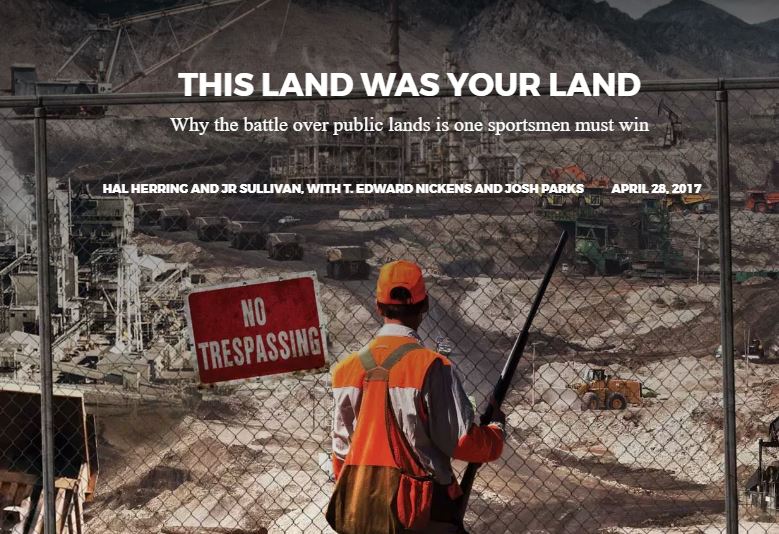
The future of hunting and fishing is under attack. States are trying to wrench control of public lands from the federal government in order to drill, mine, sell off, and—ultimately—steal our national sporting heritage. Here’s why public lands must remain in public hands. Why shouldn’t states take control of federal public lands? This chart shows how states already boot sportsmen off areas they manage. No one knows the terms of future transfers, but if the past is a guide, public hunting and fishing access will be lost. Read More
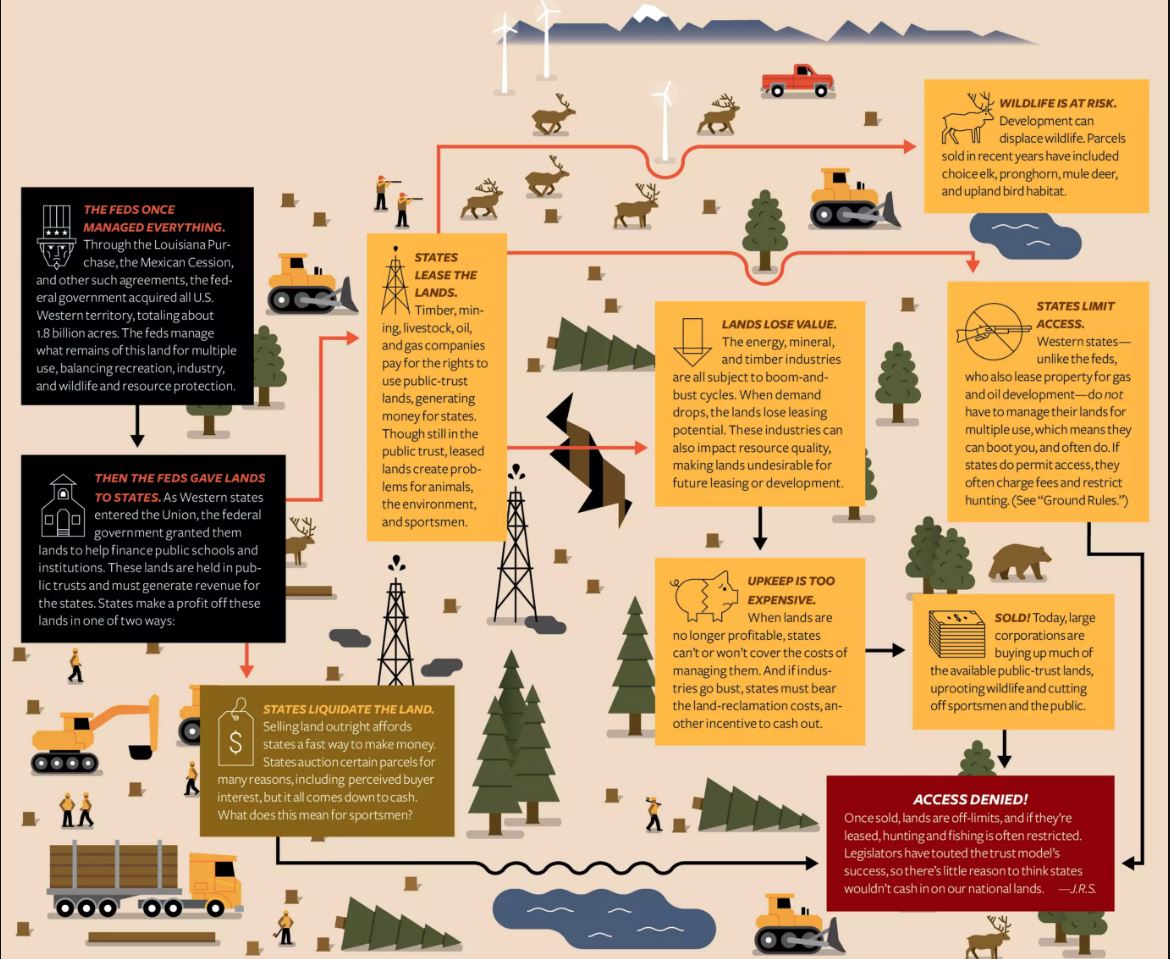

Stacy Creek, is in the Payette National Forest, about 20 miles north west of Weiser, off upper Mann Creek Road. On Saturday September 23, 2017 Seven members of Squaw Butte and a ranger named Matt from the Weiser ranger district met at the parking area at the intersection of Mann Creek and Adams Creek roads.
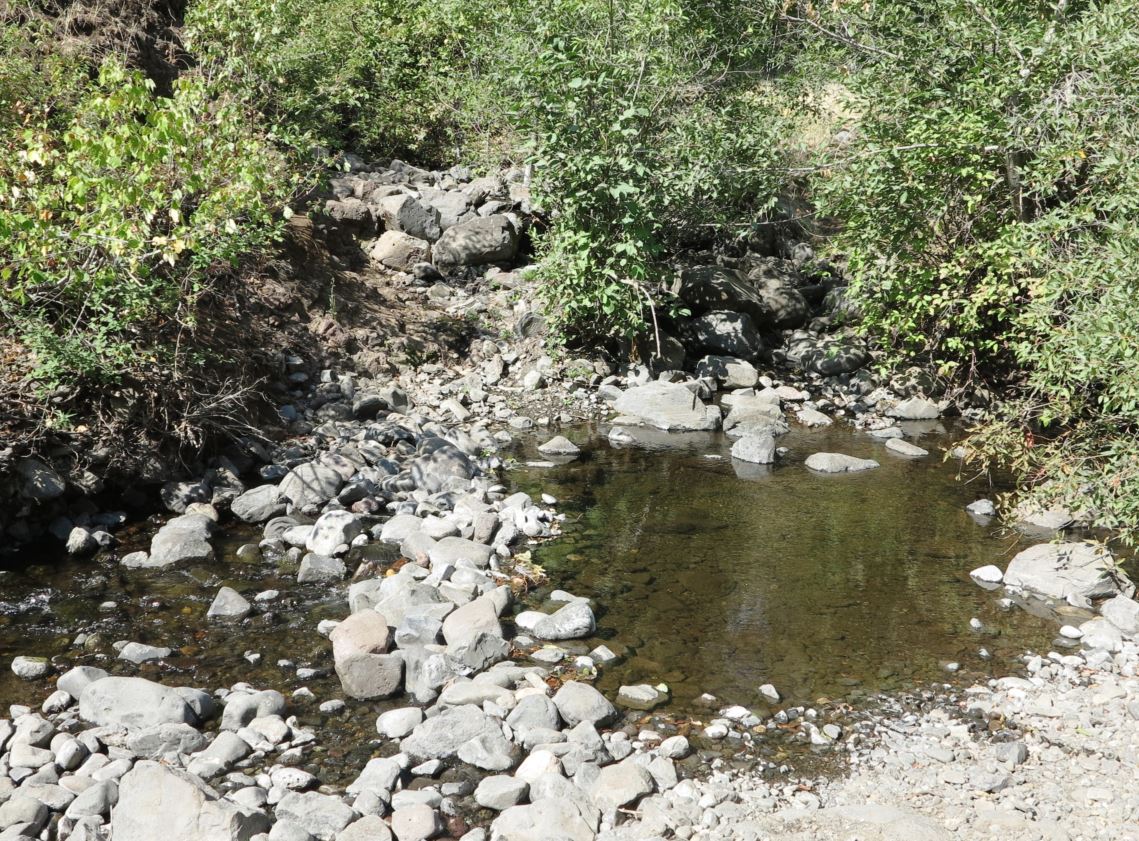
The first order of business was to work on the trail bed of the Mann creek & Stacy creek crossing. This crossing had some large rocks and a drop off that were not horse friendly. After spending some time considering options, the team determined that the best approach was to move two large rocks and a number of smaller ones, creating a trail up the slope that a horse could easily handle. With rock bars we were able to move the circled rocks to new locations. As hunting season was in full swing, traffic on Mann Creek Road was busy, so we moved our rigs to the southern end of the trail to ride, see Map.

The original plan was to park at the gravel pit, but when we got there it looked like an RV park so we continued to the trail head. Parking there was limited due to someone putting their hunting camp in the middle of the parking area, but as we had Ranger Matt with us, we parked our rigs all around his camp. P1 first parking location, P2 second!
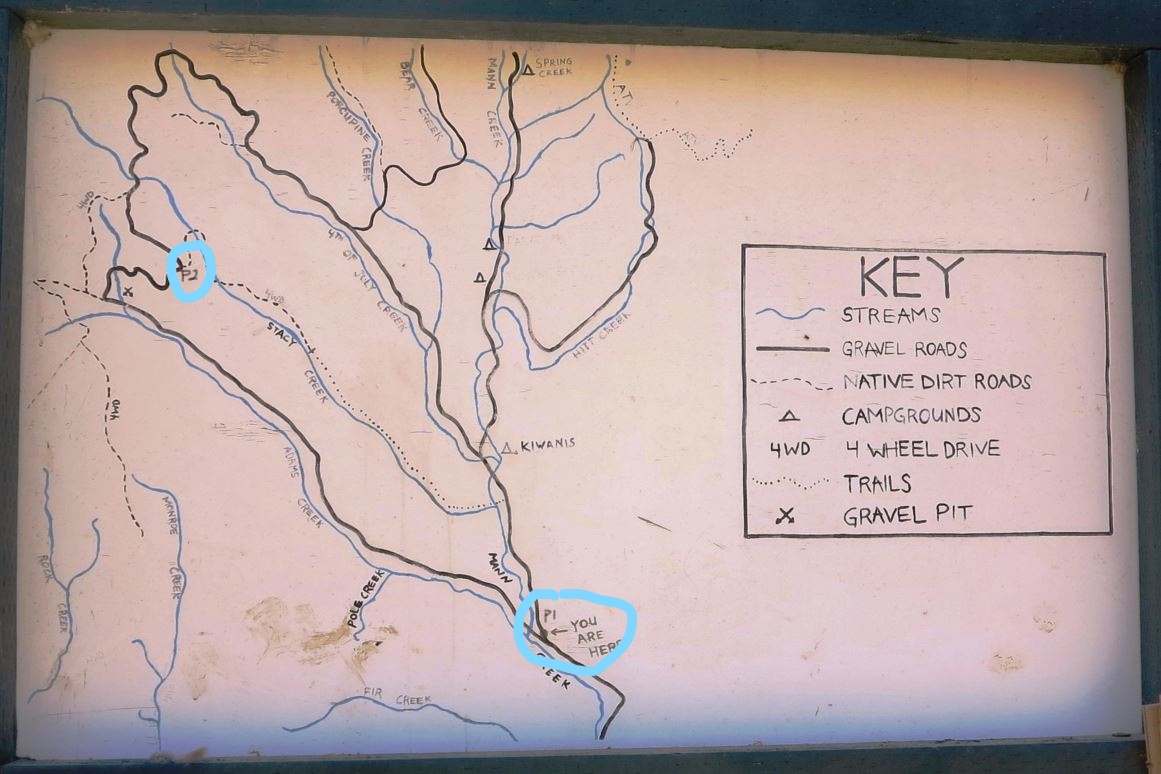

The trail starts from this location and follows what appears to be a logging road for a bit over 3.5 miles. This section of trail is very pretty and shaded and made perfect fall riding. Once you are down to creek level, the trail turns single track and follows Stacy Creek north to Mann Creek road. This section of the trail is around 3 miles long. If you combine the roads a loop could be made, but do it when traffic is light.

Shannon and Nancy put on their Sawyer protective gear and removed some blow down that was blocking the trail, and Rob and Matt cleared about 200 feet of Hawthorn bush. The thorn of this stuff goes right through leather gloves so handling takes care and cutting it is not high on fun thing to do lists.
We returned to our trailers a bit before 16:00, and were on the road for home by 16:45. Members attending were: Nancy Smith, Shannon Schantz, Janelle Weeks, Lisa Griffith, Lynn & Peggy Garner and Rob Adams
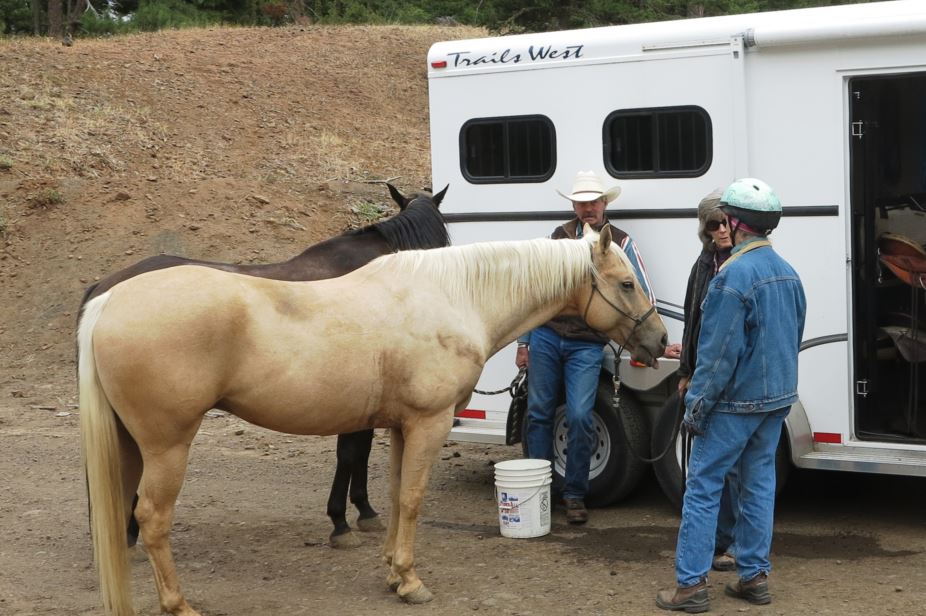
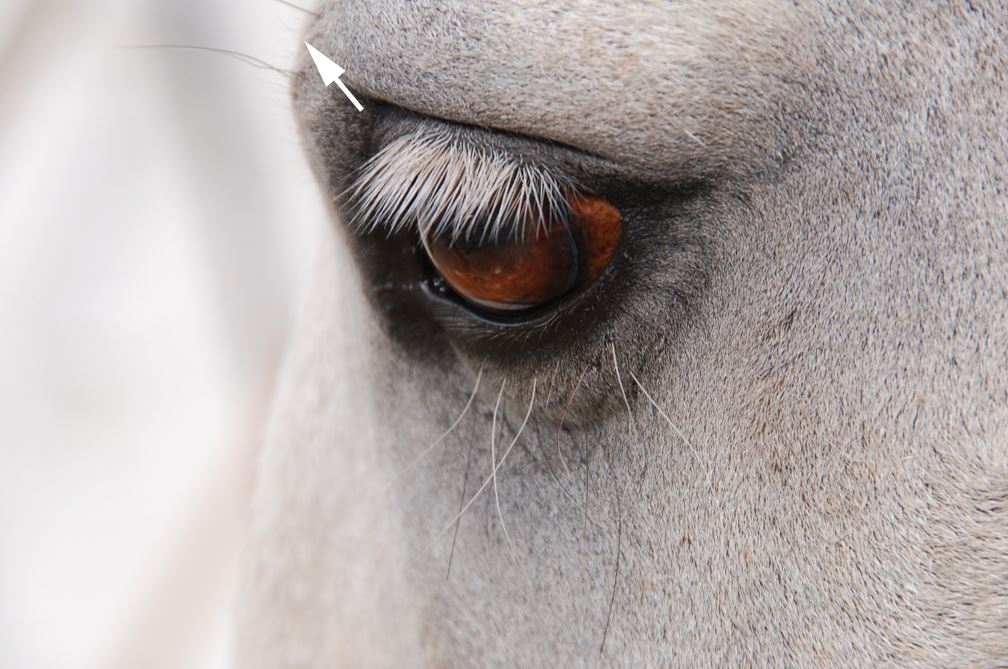
Why Are Horses an Interesting Model?
Horses belong to the order Perissodactyla, and within this they are one of nine species in the family Equus. By the end of the Pleistocene era (approx. 2.5 million – 12,000 years ago) wild horses (Equus ferus) roamed across Europe, Asia and North America, and it is estimated that the domestication of horses began around 5000 years ago. However, by the middle of the twentieth century horses had become extinct in the wild, yet were thriving as a domestic species. Domestication can dramatically influence the social, cognitive, and morphological characteristics of a species, and the study of domestic species is of great interest from both welfare and evolutionary perspectives.
Horses are long-lived social animals. Feral populations have demonstrated that without domestic pressures horses would live in a society comprising of several small groups or ‘bands’ that share space and resources, and to which membership stays relatively stable over time. Bands have large, overlapping ranges so horses regularly come into contact with many other conspecifics, and inter-band dominance indicates that within the larger herd established social relationships exist. Consequently, horses show fission-fusion dynamics; a variation of the same complex social organisation that is seen in humans, bonobos, chimpanzees, and macaques, as well as elephants, spotted hyenas and many cetaceans. Group life in these societies is determined by complex, long-term social relationships that must be maintained, suggesting effective communication would be adaptive.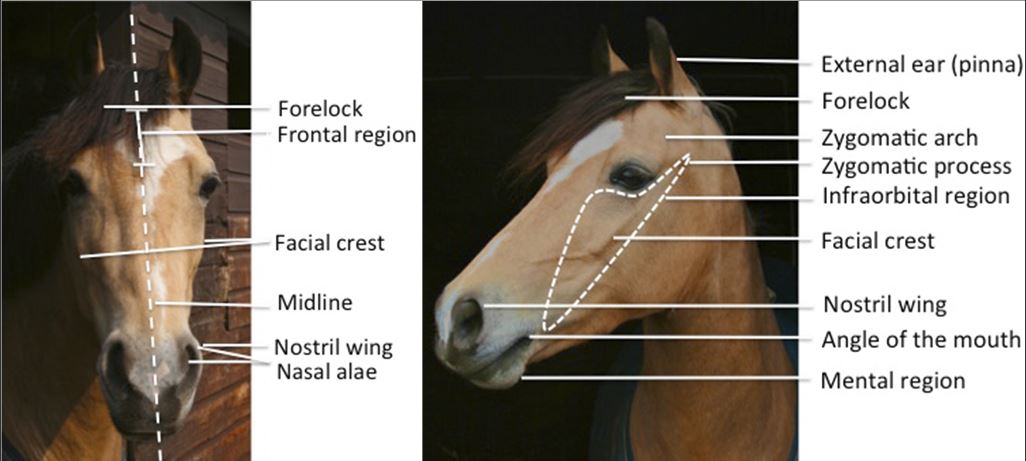
Horses are predominantly visual animals, with reasonable visual acuity that, at 23 cycles per degree, is better than domestic cats and dogs. While horses’ use of head and body posture in signaling has been described in observational literature, surprisingly their use of facial expressions has been largely overlooked. This is despite attempts to quantify facial expressions in horses’ close relatives, plains zebra, and reports that horses do routinely use some apparently complex facial expressions (e.g. snapping and the estrous face, which both involve pulling back the lips and flattening of the ears.
A systematic way of recording facial expressions would have a wide range of uses, with the potential to assess and improve welfare for horses, as well as enhancing our understanding of communication and cognition in this highly social species and providing insights into the effects of domestication. Questions about whether particular facial movements are associated with negative emotional states or indicative of positive experiences will be particularly important to address, and FACS provides an ideal framework for such investigations. More generally, FACS provides a framework through which species with different phylogenetic and ecological influences can be compared to investigate the functional significance and evolutionary origins of facial expressions. Read More
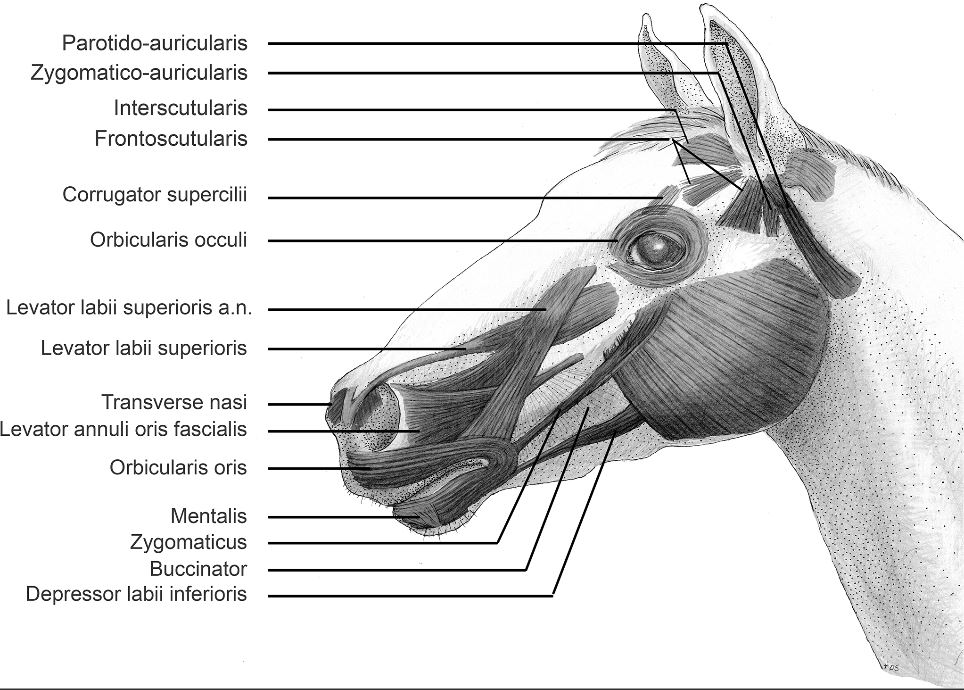
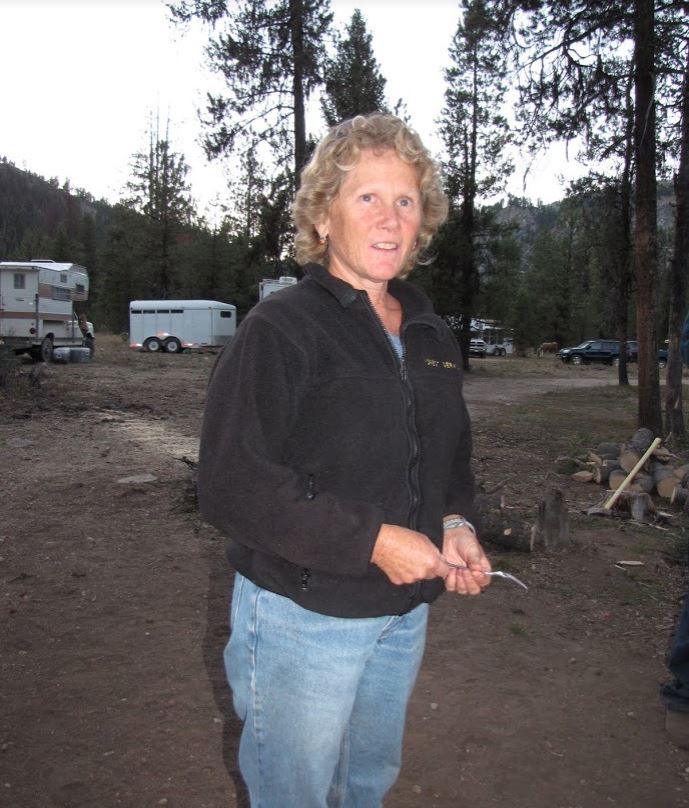
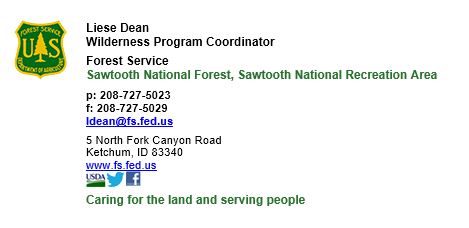
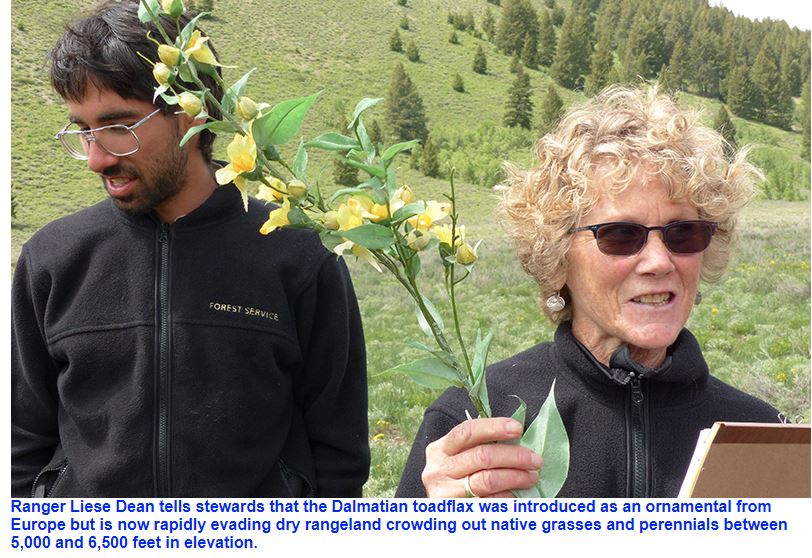
Liese Dean USFS – Will be retiring in October after a long and distinguished career with the forest service. In her roll as Wilderness Program Coordinator for the Sawtooth District, She had a long relationship with BCHI and the Squaw Butte Chapter. We worked on a number of projects with her and the team of rangers who worked for her. Our last project was just completed the first weekend in September, the Mcgown Lake – Wilderness Volunteer pack support project. Liese will be missed, but you can be sure her work will continue in the capable hands of the many she trained over the years. Leise is not leaving the area so it is very likely we will see her camping by a high mountain lake in one of the many wilderness she cared for and loved. See one of the many papers she published
Description:
This comprehensive guide focuses on restoration of small-scale impact caused by human actions in wilderness and backcountry areas. The guide’s goals are to: 1) Help practitioners develop plans that thoroughly address the question of whether site restoration is the best management action and, if so, develop a site-specific restoration plan that incorporates ecological concepts and addresses patterns of human use. 2) Provide the latest information on site-specific restoration techniques, including site preparation, soil amendments, planting, mulching, and so forth. 3) Explore the various methods of plant propagation both on and off a restoration site. 4) Provide approaches for project monitoring and documentation.
The bill was given a hearing today in the House Natural Resources Committee, led by Chairman Rob Bishop (R-Utah).
The following statement is from Brad Brooks, director of the public lands campaign at The Wilderness Society:
“This bill takes land that belongs to all Americans and sells it out to the oil and gas industry by prioritizing energy production over wildlife, hunting, fishing, biking and other recreational uses. It gives the keys to all decision making on energy development to states and industry while blocking the public from enjoying their own lands. Whether national parks, forests, wildlife refuges or BLM lands, America’s public lands belong to all of us and must be managed for the benefit of the entire nation, not just oil and gas companies.”
Background
H.R. 3565 attempts to legitimize the false premise that the federal government is hindering oil and gas production on public lands. Energy developers have chosen to limit investment due to market forces and other factors outside of government control. According to Wilderness Society analysis, nearly 200 million acres of the federal mineral estate are open for leasing. In 2015 only 15 percent of all land offered in lease sales was actually purchased by industry.
H.R. 3565 would undermine bedrock environmental safeguards, endangering air, water and wildlife. Plus, it would eliminate the process that guarantees the public’s opportunity to participate in decision making about public land. Specifically, the bill would block protections provided by the Endangered Species Act, National Historic Preservation Act, National Environmental Policy Act and Administrative Procedures Act.
Moreover, states lack the funding, staffing and expertise necessary to manage oversight of federal oil and gas development.
H.R. 3565 is part of a larger agenda to sell out or sell off the nation’s shared public lands. Other bills to dispose of public lands are quickly gaining traction in Congress. The Mojave County Federal Lands Management Act, introduced by Senator Jeff Flake (R-Ariz.), S. 467 would not only mandate the sale of a large quantity of public land in Arizona for purposes of deficit reduction, but it would also set a new precedent of giving local county elected officials the power to decide which lands to sell and waive requirements to include the public in the decision. This bill received a hearing in July in the Senate Environment and Natural Resources Subcommittee on Public Lands, Forests and Mining.
In January, the House of Representatives voted along party lines to change the way the Congressional Budget Office accounts for selling off public lands. This rule says, in effect, that giving away national parks, forests and other public lands has no dollar impact on the federal budget. Which makes it easy for Congress to give away to states land that belongs to all Americans. Cash-strapped states would sell or lease much of this land for indiscriminate mining, drilling and logging.
Several members of Congress and more than a dozen state legislatures have advocated legally questionable land giveaways, turning public lands over to state control. Republican and Democratic voters alike reject this idea. Yet pursuit of this agenda, with support from the Koch brothers and pushed by the American Legislative Exchange Council, erodes the idea of conserving our natural heritage for future generations. The Outdoor Retailer show, traditionally held in Salt Lake City, decided on February 16 to take its show out of Utah due to the state’s continued hostility toward federal lands (Salt Lake Tribune story).
The Wilderness Society is the leading conservation organization working to protect wilderness and inspire Americans to care for our wild places. Founded in 1935, and now with more than one million members and supporters, The Wilderness Society has led the effort to permanently protect 109 million acres of wilderness and to ensure sound management of our shared national lands. www.wilderness.org.
Contacts:
Kate Mackay, Communications Director, The Wilderness Society, kate_mackay@tws.org; 602-571-2603
Brad Brooks, Director, Public Lands Campaign, The Wilderness Society, 208-350-2079, 208-870-9043
Michael Reinemer, Deputy Director, Wildlands, 202-429-3949, michael_reinemer@tws.org
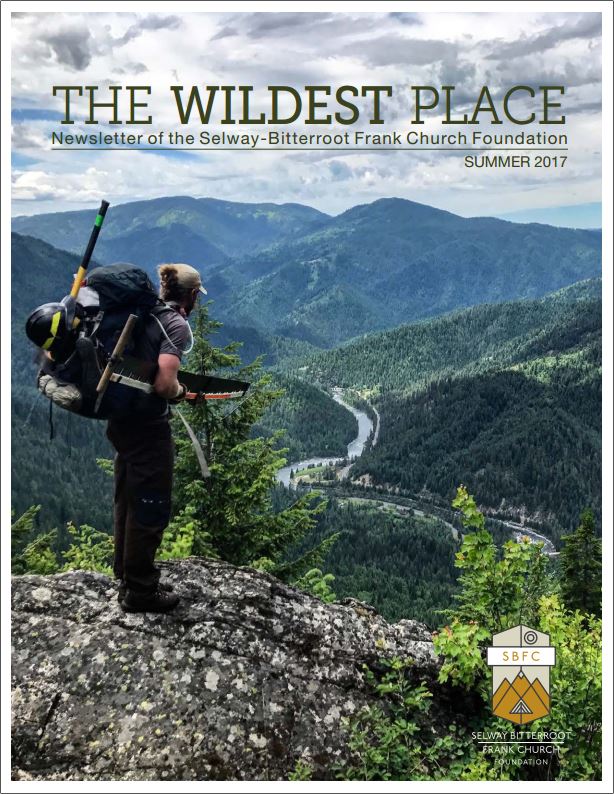 Summer 2017 Email Edition
Summer 2017 Email Edition
Thank you for your support of the Selway-Bitterroot Frank Church Foundation. I’ve attached the summer newsletter. We’ve had a terrific season thus far, made possible by our tremendously dedicated seasonal staff, our Wilderness Ranger Interns, and all of the volunteers who came from all points across the nation (as well as locally) to dedicate their vacation time to stewarding the lands we love. We’ve got a few more projects in September and October before we close out the season.
Thank you for reading the newsletter and keeping current on the work we do. Enjoy.
Sue Webster
Selway Bitterroot Frank Church Foundation
Communication & Membership Coordinator
RMRS – 322 E. Front St. Ste. 401
Boise, ID 83702
208-861-2010
swebster@selwaybitterroot.org
About Wilderness Volunteers: https://www.wildernessvolunteers.org/about-wv.html
The Project:
Central Idaho’s Sawtooth National Recreation Area and Sawtooth Wilderness are known for the rugged grandeur of their soaring 10,000 foot peaks, flowery mountain meadows, crystal clear lakes, towering alpine forests, and abundant wildlife, including elk, mountain goats, black bear, wolves, wolverines and pikas! Backpacking and hiking are spectacular in this country, and trout fishing is exceptional in backcountry lakes and streams. Our journey will begin at the beautiful Stanley Lake – just a few miles outside of the alluring mountain community of Stanley, Idaho. The area has several accessible hot springs, historic sites and other great places to play in and explore.
Our service project will be heavy trail maintenance in the remarkable Sawtooth Wilderness. We’ll set up a base camp at McGown Lakes at 8505’elevation after a backpack of 6.5 miles with pack support for tools, food and commissary supplies. Crew will camp at McGown Lakes and hike about a mile to project location on other side of 8,800’ pass. Most of the work will be focused on heavy trail maintenance and tread repair (Iron Creek – Stanley Lake Trail 640) above Sawtooth Lake, where the trail has sloughed in and become narrow and hazardous. Tread will need to be regraded to standard width with hand tools, rocks removed with hand tools and some rock wall constructed. If time permits Observation Peak Trail 614 which has not been maintained in several years will need heavy maintenance using a crosscut saw to clear downed trees, digging new trail tread, moving rocks, dirt and vegetation. Free time can be spent exploring the ever beautiful Sawtooth Wilderness – relaxing, fishing in alpine lakes, taking pictures, or setting off on a more strenuous hike to the secluded Trail Creek Lakes.
Additional Information: Crew will hike in about 6.5 miles from Stanley Lake Trailhead, or about the same distance from Iron Creek Trailhead. Pack stock will transport gear from Stanley Lake (6,500’) to the campsite at McGown Lakes (8,505’). This area was burned in 2003 by the Trailhead Fire. Iron Creek Trailhead (6.700’) and trail to Sawtooth Lake are the most heavily used access in the Sawtooth Wilderness, and for good reason – the spectacular alpine scenery is unparalleled! Expect hot temperatures and strenuous work on exposed mountain side with world class views. Water for the full day will need to be packed from camp.
This project is rated as a challenging project.
Challenging+
– Strenuous with longer backpacks, off-trail backpacks, sometimes with significant elevation changes. Also trips with camping and work at elevation, or canoeing with portages. These trips are very challenging and require excellent aerobic conditioning, past experience in outdoor settings and familiarity with backcountry camping. Challenging projects are not for beginners.
We highly recommend that those coming from low elevation (anything below about 5,000 feet) plan an extra couple days in the area before the trip to acclimate to the elevation for your own safety. Altitude sickness is a concern when traveling from low elevation to high elevation and getting acclimatized before the trip is one of the easiest ways to prevent it. If you need ideas on things to do/see before the trip contact your leaders.
Who can Volunteer? https://www.wildernessvolunteers.org/who-can-volunteer.html
WV Leaders for this Project
Aidalicia Swertfeger
is vying for that “life less ordinary” as she attempts to merge her zest for the outdoors with her technical education in communication design. Growing up in the foothills of the Sierras, Aidalicia lived for winters snowboarding in Tahoe, something she misses greatly. Having moved to Austin, Texas to complete her degree, she has realized she needs texture and pitch in her horizon. Planning on a Pacific Northwest relocation, she’ll continue on as a runner, an IPA girl, an avid solo traveler, a thru-hiker and a practitioner of minimalism.
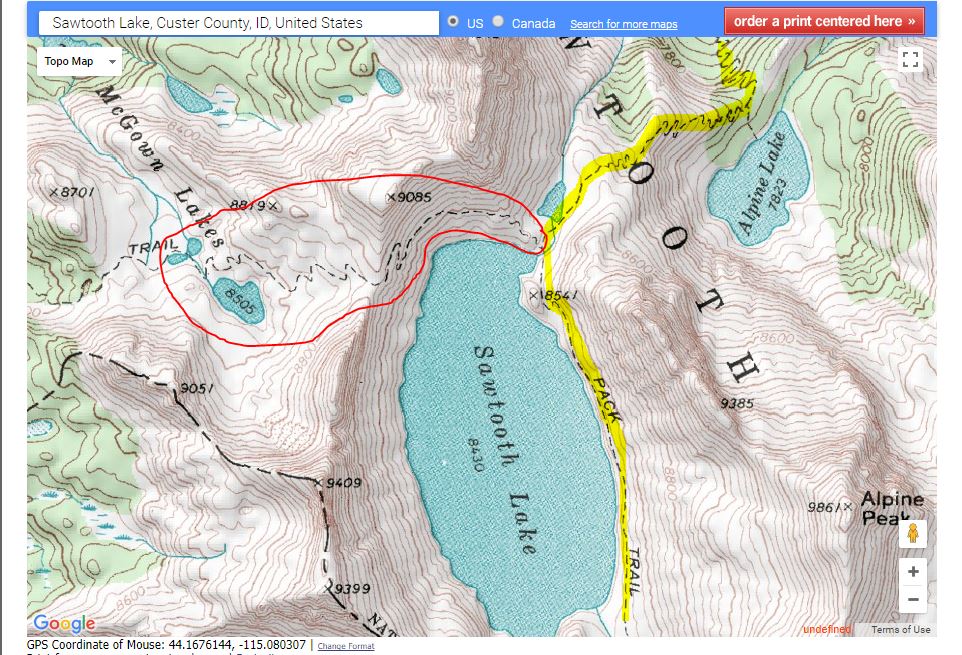 The project trail is indicated by the area circled in red.
The project trail is indicated by the area circled in red.
 The Trail to the camping and work area was from the Iron Creek Trail-head, to Sawtooth’s lakes southern end. This is the second most popular trail in the Sawtooth area and is utilized by hikers, back packers and their pets!
The Trail to the camping and work area was from the Iron Creek Trail-head, to Sawtooth’s lakes southern end. This is the second most popular trail in the Sawtooth area and is utilized by hikers, back packers and their pets!
Back Country Horsemen of Idaho – Squaw Butte Chapter volunteered to provide packing support for this project working with the Wilderness Volunteer leaders and the Sawtooth Ranger District.
From: Dorr, Jay -FS
Sent: Friday, August 25, 2017 09:06
To: Zoe Putter ; Rob Adams
Cc: Caitlin Frawley -FS; Dean, Liese -FS
Subject: RE: McGown Peak – Pack Support Project – August 26 – September 2
Stanley Lake drainage is still closed for fire and crew did not finish cutting out trail to McGown from that side.
Plan to go in from Iron Creek and camp at Sawtooth Lake.
I would rather not send pack string up that trail with all of the foot traffic it gets or have crew camp at Sawtooth Lake with all of the other use it gets. There is usually lots of traffic on Labor day weekend.
That is our best alternative with the fire in Stanley Lake drainage. Crew can work on original project. If they finish and have time, they can work around Sawtooth Lake and down North Fork Baron a ways. They can make some repairs in narrow spots along Sawtooth Lake. There are a lot of rock to remove from trail going that way.
If there are not campsites at Iron Creek Campground, there are undeveloped sites back down road.
Horse trailer parking may be difficult when Rob comes back to pack out camp. He may have to park a ways back down road.
I have been away working on other parts of forest and have not had email access until this morning. Caitlin is working on fire for a few days.
Please get word out to crew on change of meeting location and access. Sorry for short notice but fires are never convenient.
Have a great trip,
Jay
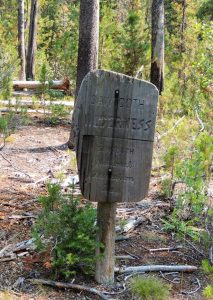 BCHI
BCHI
On Saturday August 26, members Terry & Gail MacDonald, Jon & Dianne Seel, Laurie Bryan, Janelle Weeks, Lisa Griffith, Shelly Duff, Janine Townsend and Rob Adams meet at Stanley lake camp ground to work with the rangers and WV volunteers getting their 130 pounds of tools and their food and kitchen up to the work site at Sawtooth Lake. Caitlin Frawley was the ranger who would be working along side the WV volunteers and was our contact for this effort. On Sunday morning Caitlin delivered the tools, food, kitchen and other equipment to our camp site.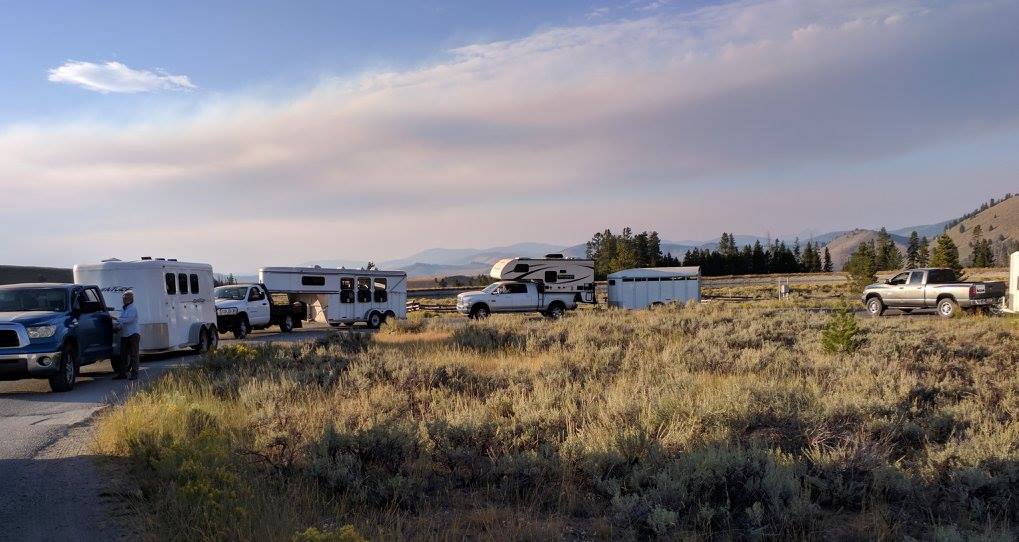 We had scouted the Iron Creek trail head and determined we didn’t have suitable parking for all the trailers so choose to take the Alpine Way trail from Stanley lake over to Iron Creek, making the ride to the camp site and back 22 miles. After getting packed up we started out from Stanley lake and made pretty good time up the steep and little traveled trail. At mile 6.5 we started encountering downfall and at mile 7 two dangerous creek crossings. At this point it was getting late and we turned around to give it a try the next day from the Iron Creek Trail-head.
We had scouted the Iron Creek trail head and determined we didn’t have suitable parking for all the trailers so choose to take the Alpine Way trail from Stanley lake over to Iron Creek, making the ride to the camp site and back 22 miles. After getting packed up we started out from Stanley lake and made pretty good time up the steep and little traveled trail. At mile 6.5 we started encountering downfall and at mile 7 two dangerous creek crossings. At this point it was getting late and we turned around to give it a try the next day from the Iron Creek Trail-head.
Laurie Bryan August 28
Packing supplies in to a wilderness trail crew at Sawtooth Lake. The first day got a little rough and two of the guys had to bailed on us. Regrouped the next day minus the two. The next day and a different route, five women, 11 horses, 1 mule and Rob made it to the lake without incident. The “G” in Girl Power now stands for “Get ‘er done.” Laurie took most of the pictures on this project
Shelly rounding “Oh Shit Drop.” I have no idea what’s it’s called – but that’s what I’m calling it. Pictures do not do this section justice – besides – I’m trying to shoot pictures and trust that Jack isn’t going to plumet to our death off these sheer faces. The most wicked trails I’ve been on I think. Absolutely beautiful. I would love to take some of the folks who scoff at “trail horses” for a little hike on these trails. I think their opinion of “just a trail horse” might change.
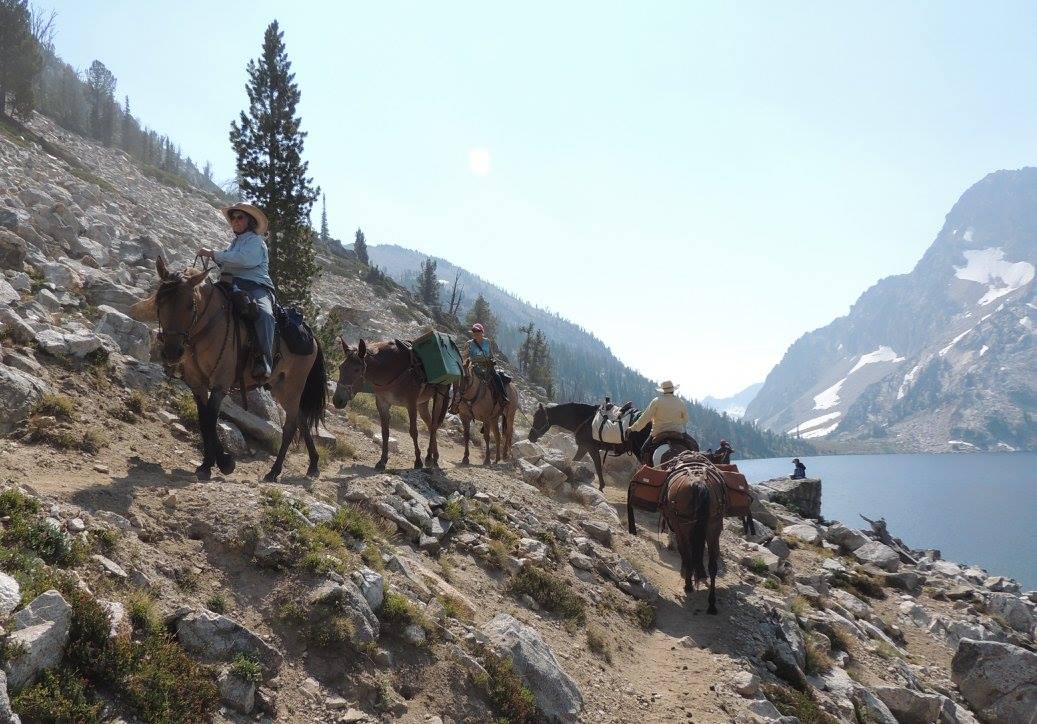
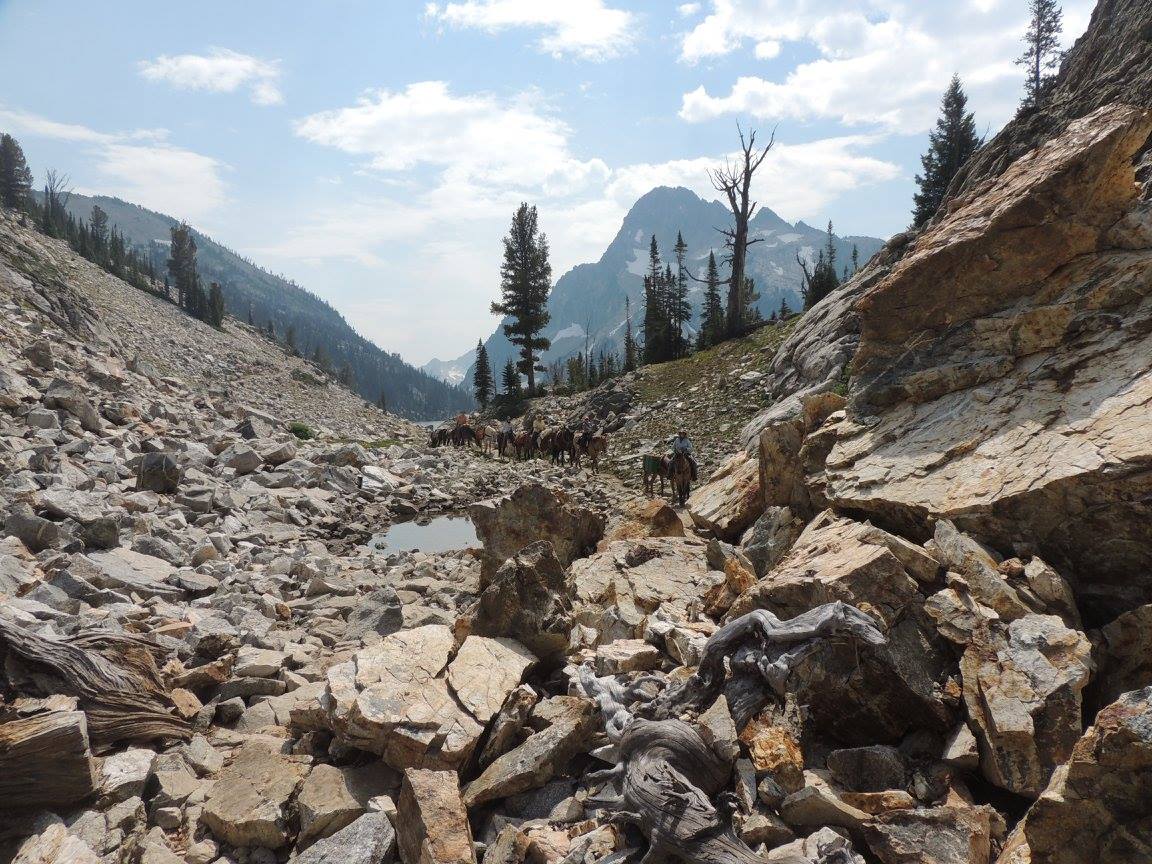
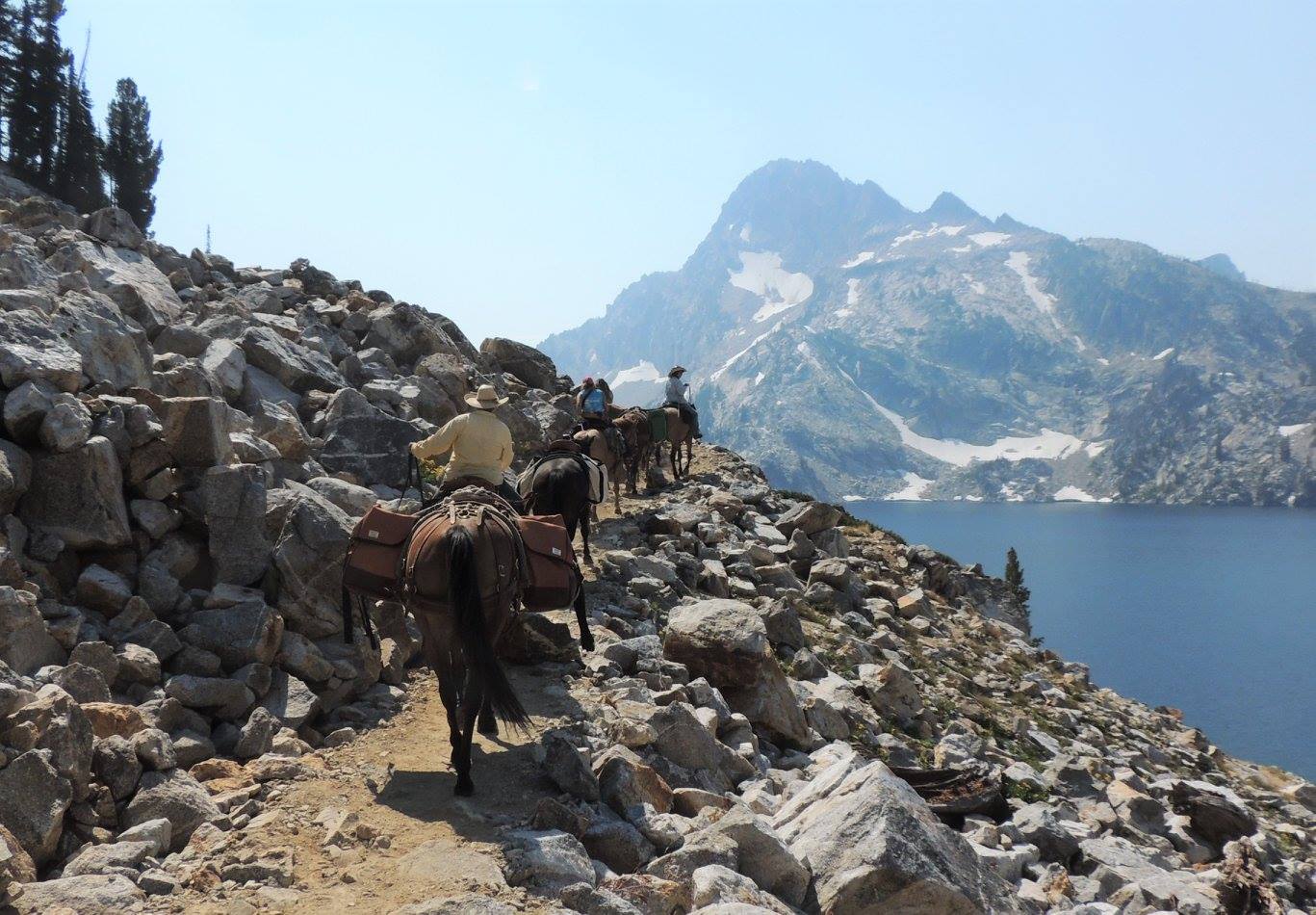
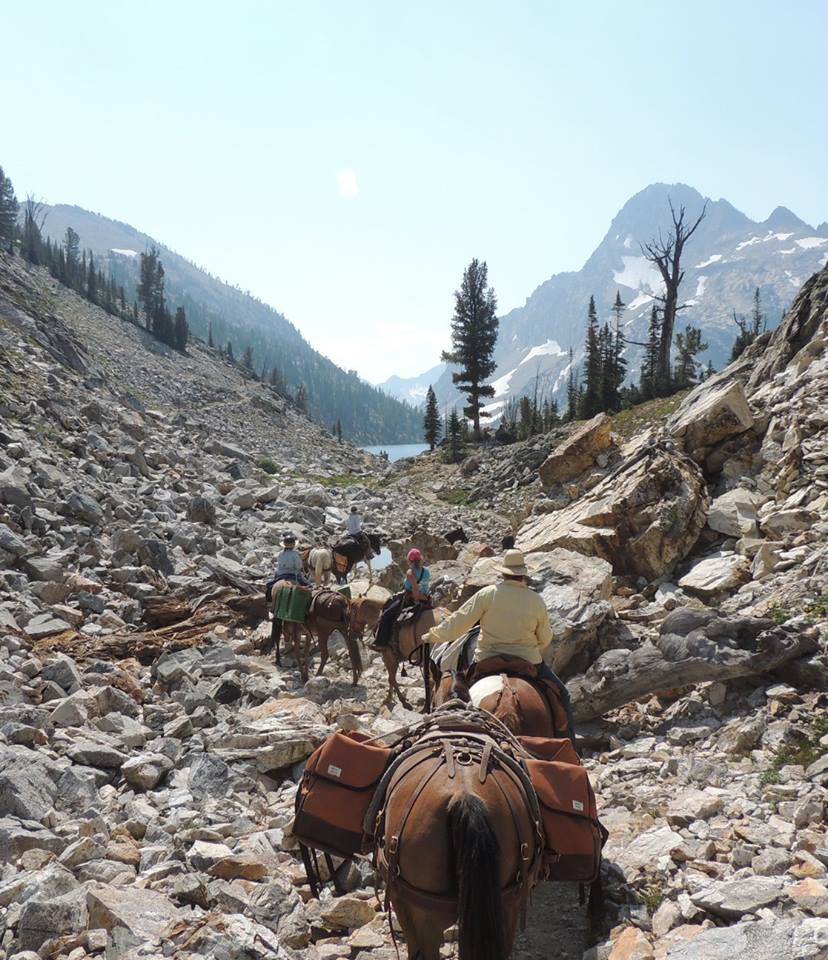

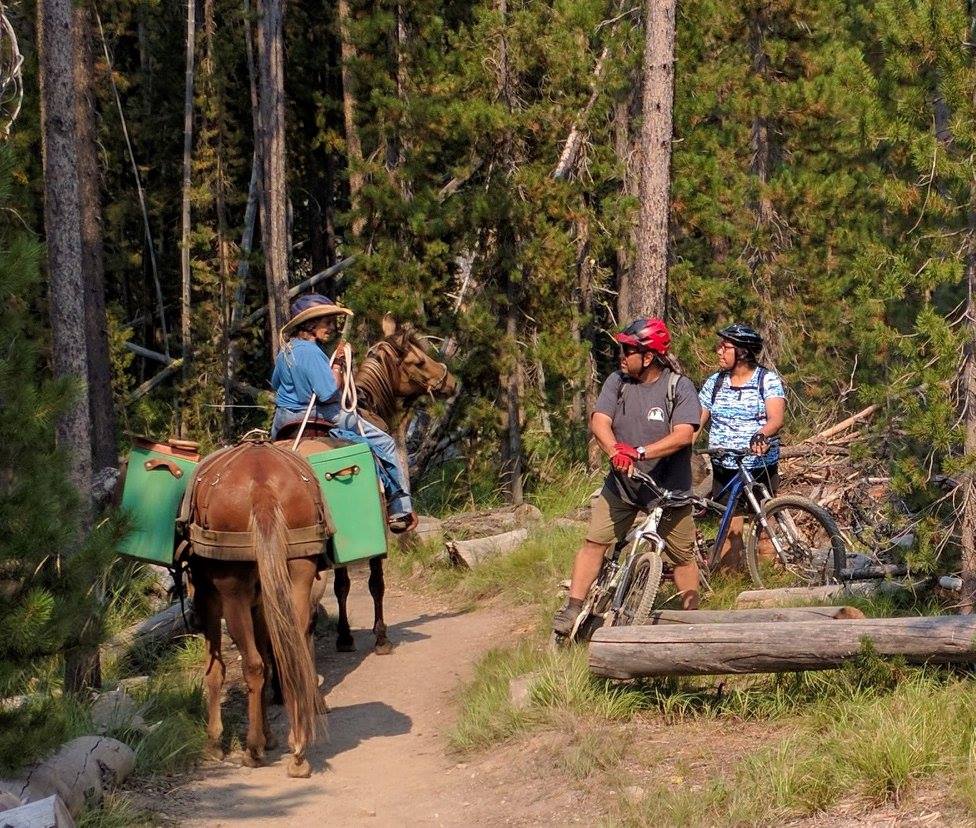 Janine talking to some of the many trail users we met while packing for this project, with very few exceptions each encounter went well, with the other users very interested in what we were doing and the stock. Lots of pictures of us were taken.
Janine talking to some of the many trail users we met while packing for this project, with very few exceptions each encounter went well, with the other users very interested in what we were doing and the stock. Lots of pictures of us were taken.
On September 2nd, Janelle Weeks, Lisa Griffith, Shelly Duff and Rob Adams returned to Sawtooth lake with five pack stock and packed out the crew.


